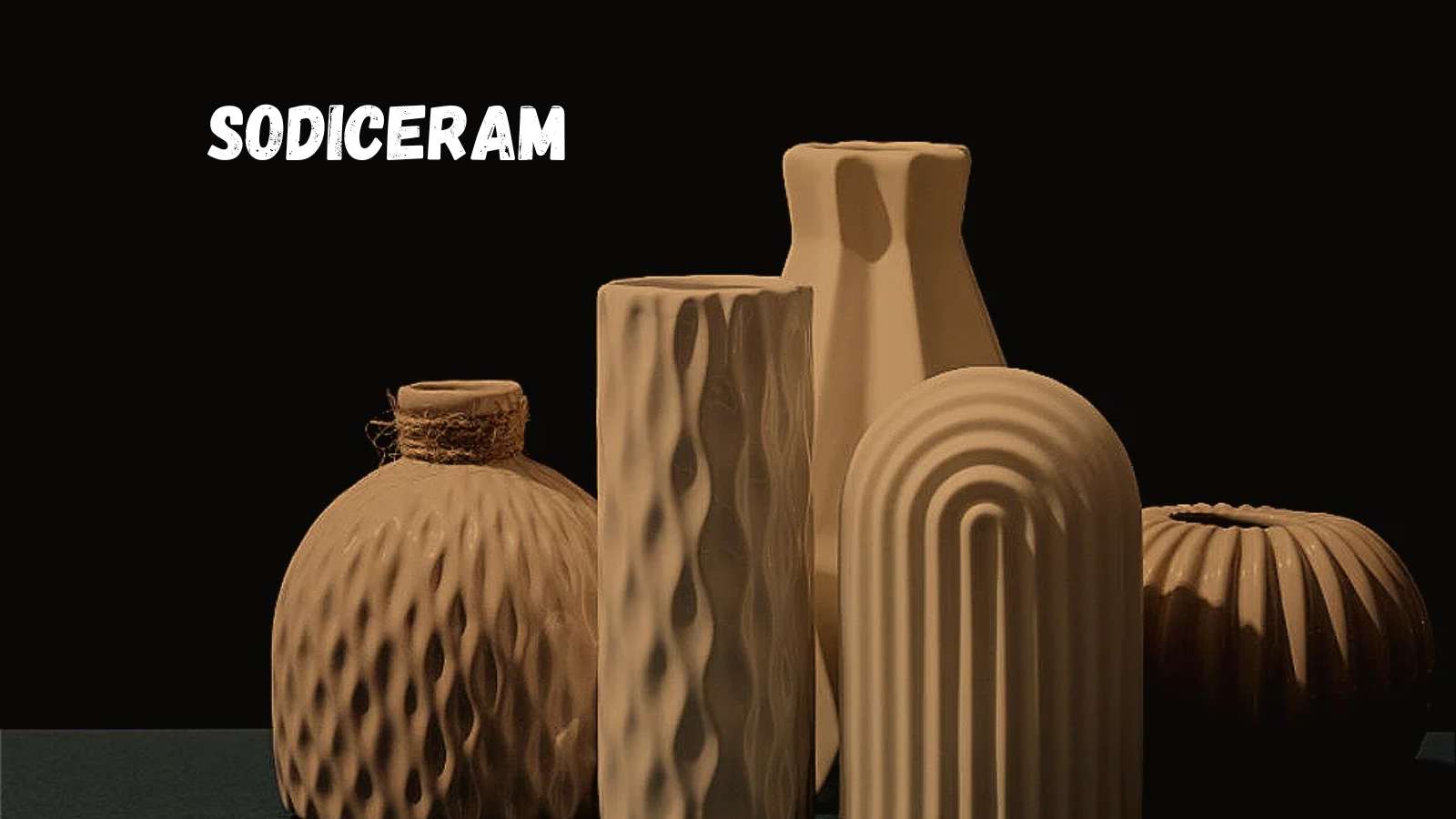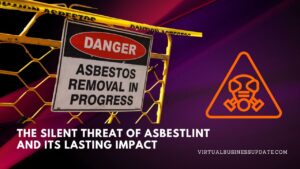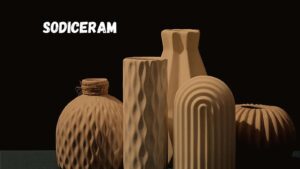Sodiceram can refer to two things, and both of them are intriguing. It was previously a French firm in Reims that produced bathroom items as well as tiles for everyday use, but it shut down in 2021 (Societe.com).
Currently, the term also refers to a new type of ceramic substance that incorporates sodium into the formula in order to make it harder, more resistant to heat, and more environmentally friendly ScienceDirect.
Ceramics are important because they feature in our daily life—on our floors, in the kitchen, in hospitals, and even in cutting-edge gadgets. What is unique about Sodiceram is that it bridges the old narrative of a local company with the new narrative of intelligent, sustainable ceramics for building a future.
| Category | Story |
|---|---|
| Year of Founding (Company) | It began back in 1979, in Reims, France. Small beginnings, but it counted. |
| Closure Year (Company) | After more than 40 years, the doors finally shut in 2021. A long run, not forever. |
| Major Products (Company) | Household items. Sinks, toilets, baths. Also tiles and fixtures. The fundamentals that complete houses. |
| Firing Temperature (Old) | Conventional ceramics need high fire. About 1200–1300 °C. Hot, heavyweight, costly. |
| Firing Temperature (Sodiceram) | Fires down with sodium-based tricks. 800–1000 °C. Still strong, but less hungry for fuels. |
| Energy Savings | Practically half the energy saved when compared with conventional methods. That’s less money wasted, less smoke in the atmosphere. |
| Carbon Emissions | Lower heat means lower CO₂. A smaller footprint, less waste. A quiet win for the planet. |
| Strength & Durability | Doesn’t break easy. Can withstand heat, cracking, and chemicals with no issue. |
| Design Flexibility | It dresses up. Shiny, matte, stone appearance, even metallic. Contractors enjoy the flexibility. |
| Possible Applications | Houses and hospitals. Plants and aircraft. Even future technologies like batteries and smart walls. The road keeps growing. |
What is Sodiceram?
Sodiceram as a Historical French Company
Sodiceram’s story began in Reims, France, in 1979. A small company with a big role. They made everyday things—sinks, bathtubs, and toilets. Also tiles and fixtures, those finishing touches for homes and offices. For decades, local builders counted on them. Families too. The name became familiar in the region, almost trusted like a neighbor. Why? Because it was practical but also stylish. Strong but not boring.
But the years rolled on. Markets shifted. Demand slowed. Competition grew tougher. Costs rose. After more than 40 years, the chapter ended. In 2021, the company finally shut its doors (Societe.com). A long run, but not forever.
Sodiceram as a Modern Ceramic Material
Now the name lives in another way. Not as a shop sign in Reims, but as a new material in labs and industries. This Sodiceram is different. It’s made with sodium compounds—sodium silicate, sodium carbonate. Small changes in recipe, big changes in results (ScienceDirect).
Sodium-based ceramic innovation
Traditional ceramics need fire hotter than 1200 °C. That’s a lot of heat. A lot of energy. But Sodiceram can be fired at 800–1000 °C. Lower fire. Less fuel. Still strong. Maybe even stronger.
How it differs from traditional ceramics
Old ceramics are tough but heavy on cost and energy. Sodiceram feels different. Lighter. Smoother. Easier to shape. You can give it textures and finishes, looks that copy stone, wood, or even metal. And it handles heat, water, and chemicals better too.
Growing relevance in sustainable design
The world is talking green now. Builders, designers, even city planners—they want materials that don’t harm the planet. Sodiceram fits that picture. Less waste. Less smoke. More style. That’s why it’s catching attention in modern design.
Why Did Sodiceram Gain Attention?
In the Context of the Company
The old French company mattered in its own way. It gave jobs. Helped local construction. Supplied homes with basics people used every day. But time was not kind. Demand faded. Rivals rose. Money grew tight. After four decades, liquidation was the only road left Societe.com. A quiet end to a once-busy name.
In the Context of the Material
The material tells a brighter story.
Energy-efficient production
It saves energy—almost half compared to older ceramics. Less fuel burned. Less money wasted. Better for the planet too.
Lower carbon footprint and waste reduction
When you use less energy, you cut emissions. Sodiceram leaves behind fewer gases and less waste in the making. A win for industries that want to go green ScienceDirect.
High strength and durability
And yet, strength isn’t lost. The material lasts long. It resists cracks, chemicals, and heat. From kitchen counters to hospital walls to even aerospace tech—it finds a place.
Key Features of Sodiceram Material
- Thermal stability: It takes heat without breaking. Good for ovens, machines, and electronics.
- Chemical resistance: Doesn’t react easily. Safe for labs and medical tools.
- Versatility in design: Shiny, matte, marble-look, metallic. It plays dress-up well.
- Eco-friendly: Less energy used, less pollution made. It even supports recycling. A small step toward a smarter, greener future.
Applications of Sodiceram
In Construction and Architecture
Tiles. Cladding. Facades.
That’s where Sodiceram steps in first. Buildings need surfaces that last and look good. Old ceramics were already strong, but Sodiceram goes further. Lighter weight means easier installation. Better resistance means less repair.
Architects like it for more than strength. They want beauty with sustainability. Sodiceram can be shaped, colored, or finished to match almost any design—shiny modern walls, matte natural stone, even metallic effects. It fits green building practices too. Lower firing temperatures mean less energy burned before the tiles even reach the site. A wall that saves energy before it’s built? That’s the new story of construction.
In Healthcare and Industry
Clean. Durable. Reliable.
Hospitals and labs cannot risk contamination. Sodiceram, with its chemical resistance and easy-to-clean surface, works well for sanitary fixtures and lab equipment. Sinks, counters, tiles—they stay strong under heavy use, without reacting to harsh cleaners or medical chemicals.
Industries also find value. High-performance ceramics are needed for machinery, kilns, and tools that face extreme heat or corrosion. Sodiceram holds its shape in hot environments, making it useful in factories, chemical plants, and even food processing lines. It’s not just a building material—it’s part of the machines themselves.
In Advanced Technologies
Electronics. Aerospace. Energy.
Sodiceram is pushing boundaries beyond buildings. In electronics, thermal stability keeps devices safe from overheating. In aerospace, every gram matters—so a lighter, strong ceramic is a win. In energy storage, researchers test sodium-based ceramics for batteries and fuel cells. The idea is simple: stronger materials that conduct well and survive heat can change how we power the world.
Special coatings also come into play. Sodiceram can be engineered to resist scratches, block radiation, or insulate better than older ceramics. From satellites to smartphones, the uses keep growing.
Challenges and Limitations
Innovation doesn’t come free.
Cost of Innovation
New materials take research, testing, and better equipment. All of that raises the price. Traditional ceramics are cheap and proven, so convincing industries to switch is not easy. At first, Sodiceram may cost more, even if it saves money later.
Adoption Barriers in Traditional Industries
Builders and factories can be cautious. They trust what they know. A material that fires at lower temperatures sounds great, but does it really last decades on a wall? Does it really hold up inside an engine? Industries need proof, and proof takes time.
Differences Between Legacy Ceramics and New Approaches
Old ceramics have a long track record. Museums, kitchens, floors—centuries of use show they last. Sodiceram, as a newer material, still has to build that trust. It offers advantages, but some buyers see risk in switching away from what has worked for generations.
Sodiceram in the Future
The future looks promising, though.
Potential Role in Green Building
Sustainability isn’t a trend—it’s the future of construction. Governments are setting stricter rules on energy use and emissions. Architects are aiming for “zero-carbon” projects. Sodiceram, with its low firing energy and recyclable potential, may become a standard in eco-friendly design. Imagine whole cities built with materials that pollute less before they even stand tall.
Expansion into Smart Materials
What if tiles cleaned themselves? What if walls conducted electricity? Or bathroom counters killed bacteria on contact? Researchers see Sodiceram as a platform for smart materials. By mixing in new compounds or coatings, Sodiceram could become antibacterial, conductive, or even capable of storing energy.
Impact on Global Ceramic Markets
If Sodiceram grows, the global ceramic market changes. Factories may update kilns. Builders may shift supply chains. Traditional ceramic producers might face competition from sodium-based innovators. In time, the word “ceramic” itself may mean something broader—something greener, smarter, lighter. Sodiceram could be one of the reasons why.
Sodiceram bears two narratives—one backward, one forward. The business in Reims served builders and homes for more than four decades, until markets and time shut its doors.
But the material that bears its name is just getting started. By reducing energy consumption, eliminating waste, and delivering strength with flair, Sodiceram demonstrates where ceramics can go in an era where the world needs greener solutions.
There are obstacles—prices are steep, economies are glacial—but the course is set. Cities expand, technology propels onward, the imperative for sustainable design grows, Sodiceram remains both a nod to the past and promise for the future.
And the result is plain: ceramics are no longer simply an issue of function, they are an issue of responsibility—and Sodiceram is the proof.








